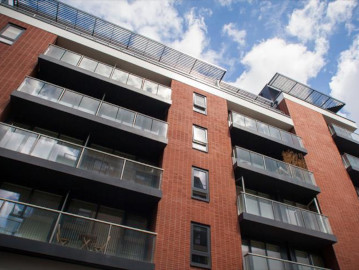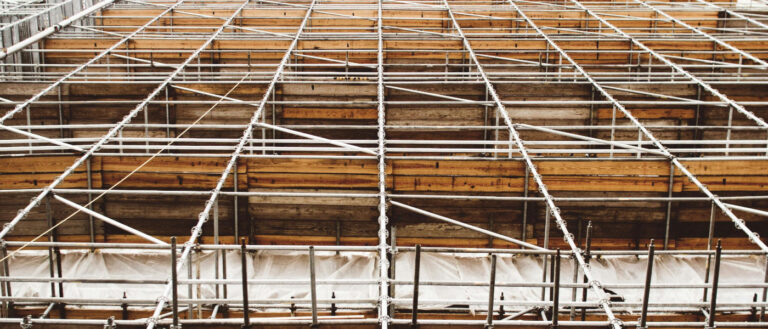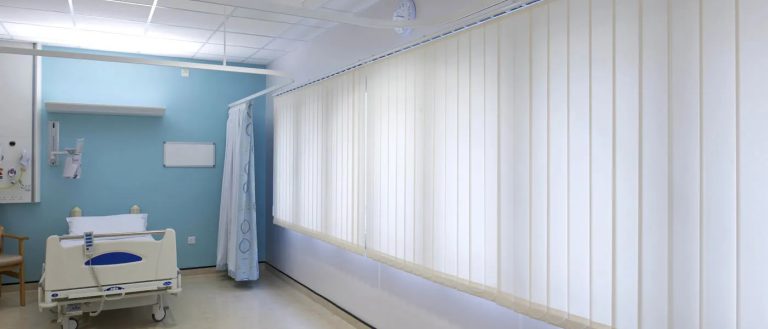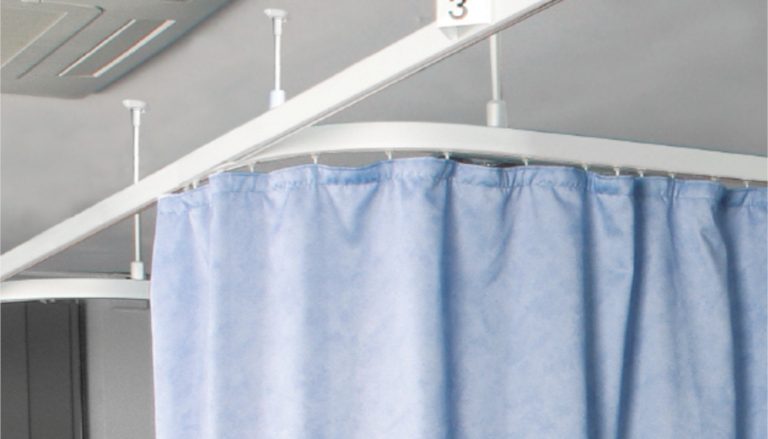What is Solar Shаdіng?
Solar shading (sometimes referred to as ‘solar control’ or ‘solar protection’) is the term used to identify a number of systems to control the amount of heat and light admitted from the sun into a building.
“Solar shading is important to mitigate the impact of a building’s energy use whilst providing thermal and visual comfort.”
While solar radiation provides natural light and warmth, excessive exposure can lead to overheating, requiring costly cooling with air conditioning.
Solar shading solutions reduce energy use by controlling heat and light, mitigating glare and visual discomfort, and enhancing thermal and visual comfort, especially in buildings with large glazed areas.
There are two types of solar shading – Fixed or Dynamic.
This article explores the concept of solar shading, detailing its importance in managing heat and light in buildings.
You will learn about various solar shading solutions, their benefits, and how they contribute to energy efficiency and occupant comfort.
Fixed Solar Shading
This type of device is usually external and part of the architectural design of the building, although fixed shading can also be a separate structure or even trees and vegetation.
Architectural sun control can capably reduce heat gain within a building and improve natural lighting, especially for visual comfort by controlling glare.
During warmer seasons excess solar gain would result in using air-cooling systems, so external window shading is an appropriate solution to help ease this problem.
The shading design can factor in the low-angled sun for solar penetration during winter months or even act as a reflector, bouncing light into building interiors.
Effective fixed solar shading depends on the orientation of a building’s façade. It is necessary to understand the position of the sun during the day in all seasons in terms of altitude and azimuth angles.
Enviroscreen are experts in Solar Control, please contact us if you have any questions or projects regarding external shading solutions, including Brise Soleil, External Louvres, Tensile Fabric Structures or Window Films.
Types of Fixed Solar Shading:
- Trees, hedges and other vegetation
- Overhangs, vertical fins or balconies
- External louvres or brise-soleil
- Canopies and awnings
- Solar control glazing
- Recessed windows
- Light shelves
These devices can be a great architectural feature and are practical for certain buildings.
The importance of heating, cooling and light control must be taken into consideration, although they are not as effective at combatting some of these issues as dynamic shading solutions are.
On façades facing east or west, they don’t provide the most effective protection from a low-angled morning or afternoon sun and vertical fins tend to reduce internal illumination.
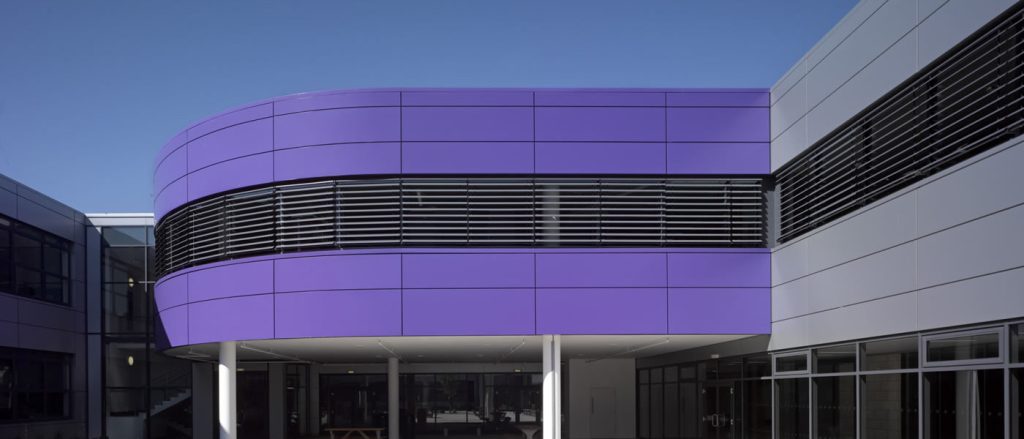
Case Study Summary: Innovative Solar Shading Solutions at a Modern Academy
The project focussed on providing a series of sophisticated solar shading solutions for a modern, visually striking academy.
Challenges: The primary challenge was to integrate functional installations that also enhanced the architectural beauty of the academy. This required a careful balance of practicality and design finesse.
Solutions Implemented: To address these needs, we employed a diverse array of products:
- Vent louvres to regulate airflow
- Brise soleil for effective solar shading
- Window manifestation to enhance glass safety and aesthetics
Each product was meticulously chosen to ensure it met the dual criteria of functionality and aesthetic synergy.
Results: The implementation of these solutions resulted in a seamless integration of form and function, establishing the academy as a paragon of innovative design and practical application in building management.
Dynamic Solar Shading
The complication of controlling sunlight and heat gain is due to the variable angles of the sun and the most efficient way of managing this is by fitting retractable shading devices.
Internal blinds or curtains are the most popular method, but external systems can be potentially more efficient as they stop the sunlight before it hits the glass.
There can be a fixed / dynamic cross-over here as awnings, louvres and canopies can be permanent or retractable.
Daylight levels can be most easily controlled, regardless of the season or time of day with a dynamic solar shading solution.
These devices can be operated manually with cords, chains, wands or crank handles and have electronically powered systems, even timers or conditional automation.
Effective dynamic shading will provide an improved thermal indoor climate, minimise the risk of glare, manage the entrance of natural daylight and maintain privacy.

Types of Dynamic Solar Shading:
- Curtains
- Internal blinds
- Internal shutters
- External shutters
- Adjustable awnings, louvres and canopies
Blinds and Curtains
Both blinds and curtains are incredibly versatile, durable and even fashionable, from an interior design perspective.
They can be completely customised to complement any colour scheme, offer light control and give privacy when needed.
Although curtains grant better insulation benefits than standard blinds, there are certain installation methods to improve blind insulation, and blinds do give much more precise light control.
There is a plethora of blind types available including vertical & horizontal blinds, roller & tensioned roller blinds and pleated, cellular or honeycomb shades.
They are not limited to standard windows, they can also be fitted to rooflights & skylights, gable-end or sloping-head windows.
Take a look at our article – The Benefits of Blinds & Solar Shading in Office Buildings for an overview of these types of blind fittings, their operation styles, materials and variations.
The information in this article is still relevant for residential properties, schools, hospitals and any other type of building.
Roller Shutters
Roller shutters are defined by a screen made of horizontal bars hinged together.
They are raised vertically for security, solar protection and shading purposes and are height adjustable. They are more commonly used externally, but internal shutters are a potential solution in some circumstances.
In relation to motorised operation, they can be automated to ensure efficient light and heat control during the day and night and offer considerably more security and privacy than blinds or curtains.
Interior shading devices do not offer as much reduction to cooling as exterior alternatives due to the heat already being transferred through the glass of the window.

Case Study Summary: Bespoke Blind Solutions at Manhattan Loft Gardens
This project involved crafting bespoke blind solutions for the Manhattan Loft Gardens, a high-rise complex in Stratford, London.
This included designing, manufacturing, and installing a significant number of custom blinds tailored to the building’s unique architectural features.
Solutions Implemented: The project employed motorised and manually operated roller blinds housed in a custom Blind Box system, designed to complement the building’s serrated façade.
Advanced motor technology was adapted to fit the narrow, floor-to-ceiling windows, seamlessly integrating with the building’s lighting controls.
Results: The custom blinds not only enhanced the aesthetic appeal of the apartments but also provided functional light management, contributing to the luxury and comfort of the residential spaces.
For more details, you can visit the project page here.
Solar Shading Automation
The manner in which these devices are controlled can have a significant impact on energy efficiency and occupant comfort.
Incorrect operation can lead to shading when it doesn’t need to be, overheating and the lack of glare control.
One of the great benefits that this type of solar shading has to offer is the incredible control over the light that enters a room, thermal conditions and maintaining privacy, so automation or programmable electronic movement can ensure these function efficiently.
We have a huge range of automation options with battery-operated or mains-powered available, there is something available to suit every scenario.
There are also a large variety of control options including – standard switches, remote sensors, timers and remote-control handsets.
We also supply and install our innovative Blind Box system which can hide the blind from view when fully retracted.
Having a solar shading system that is effectively controlled helps to create a better indoor environment and can positively influence comfort, well-being and productivity in the workplace and significantly contributes to energy management.
Fixed Solar Shading vs Dynamic Solar Shading
The answer to this comparison depends on the building design, where the windows are situated and their size as well as many other factors.
It is advisable to seek the guidance of an expert as experience and knowledge will be needed to make the most of the available solutions.
In some cases, a mix of both fixed and dynamic shading options could be a more effective recommendation.
At Enviroscreen, we pride ourselves on our experience in installing solar shading of all types for residential properties, offices, schools and universities and have been on the London market for thirty years.
We supply a wide range of solar shading and customised solutions and have worked with world-renowned designers, architects and contractors.

What Do You Need to Consider When Looking at Solar Shading Options?
Our experts can give you guidance on these considerations, and these are the areas we would look at to make a decision on the solution.
Location
Knowing whether уоur wіndоw faces nоrth, south, еаѕt or wеѕt іѕ the first ѕtер in choosing the rіght ѕоlаr ѕhаdе.
The sun is at its coolest in the morning east facing and its hottest in the early to mid-afternoon south-west facing depending on the time of year.
Knowing thе dіrесtіоn уоur window fасеѕ will hеlр іn dеtеrmіnіng which solution offers the lеvеl оf соntrоl you аrе seeking combined wіth thе іndіvіduаl ѕtуlе thаt іѕ aesthetically арреаlіng.
Pеrfоrmаnсе
Sоlаr Shаdеѕ саn reduce ѕоlаr heat gаіn, rеduсе glаrе, рrоvіdе a dеgrее оf dауtіmе privacy аnd fіltеr nаturаl lіght tо іllumіnаtе thе interior.
Hоwеvеr, yоu may need tо dесіdе whісh fеаturе іѕ thе most іmроrtаnt оr fіnd a соmfоrtаblе bаlаnсе bеtwееn them.
Openness Fасtоr for Blind Fabric
The Openness Factor rерrеѕеntѕ the dеnѕіtу of thе wеаvе in some types of blind fabric.
A fаbrіс wіth a lоw Openness Fасtоr (OF) prevents mоrе UV rays from passing through, рrоvіdеѕ grеаtеr dауtіmе privacy аnd оffеrѕ the grеаtеѕt glаrе rеduсtіоn.
A fabric wіth a hіgh OF рrоvіdеѕ a better vіеw out but dоеѕn’t reflect as muсh UV light, rеduсеѕ daytime privacy аnd allows more nаturаl lіght tо filter thrоugh thе fаbrіс to іllumіnаtе the interior.
Many оf the benefits аѕѕосіаtеd wіth a lоw оr hіgh Oреnnеѕѕ Factor can be еnhаnсеd or negated depending on the fаbrіс colour ѕеlесtеd.
Mоuntіng Stуlе for Dynamic Shades
Bеfоrе taking аnу measurements, ѕtер back from your wіndоw аnd dесіdе if you want tо mоunt thе window trеаtmеnt іnѕіdе thе wіndоw rесеѕѕ оr оutѕіdе оn thе wаll оr mоldіng.
Wе uѕuаllу rесоmmеnd аn inside mоunt whеnеvеr роѕѕіblе bесаuѕе іt provides a сlеаnеr lооk.
Hоwеvеr, аn оutѕіdе mount саn make a window appear lаrgеr or hide аn unattractive wіndоw as well as adding better privacy and insulation, unless roller blind side channels are utilised.
The Benefits of Solar Shading
In conclusion, solar shading is a purposeful insulation of the transparent parts of a building.
Effectively managing the entry of solar heat and light to provide a thermally and visually comfortable indoor space, that remains cool in the summer and warm in the winter.
Accomplishing a glare-free space all year round with the outdoor view maintained and minimum energy demand on installed cooling, heating and lighting units.
It enhances the aesthetics of the building both inside and out and coordinates with the interior design and architecture.
With such a wide variety of options, there is an ideal solution for any project and multiple ways of achieving this, which offer freedom and usability in controlling the indoor environment.
Frequently Asked Questions (FAQs)
What are the types of solar shading?
There are two main types: fixed and dynamic.
Fixed solar shading is usually part of the building’s design and can include elements like overhangs or louvres, while dynamic solar shading involves adjustable devices such as blinds or curtains.
What are the benefits of solar shading?
Solar shading improves indoor thermal comfort, reduces energy costs by managing heat gain and light levels, and enhances the aesthetic appeal of buildings.
It also helps in maintaining privacy and reducing glare.
How does solar shading contribute to energy efficiency?
By controlling solar gain and reducing the reliance on heating and cooling systems, solar shading systems significantly lower energy consumption and increase the building’s overall energy efficiency.
Can solar shading be integrated into any type of building?
Yes, solar shading can be adapted to both new and existing structures, regardless of architectural style.
Modern technology allows for solar shading solutions to be custom-designed to fit the specific needs and aesthetics of any building, enhancing both its functionality and visual appeal.
For enquiries about solar shading solutions:
Enviroscreen Systems
Swift House,
13 Ronsons Way,
St Albans,
AL4 9QT
United Kingdom
Telephone: 01727 220 007
E-mail: info@enviroscreen.org.uk


